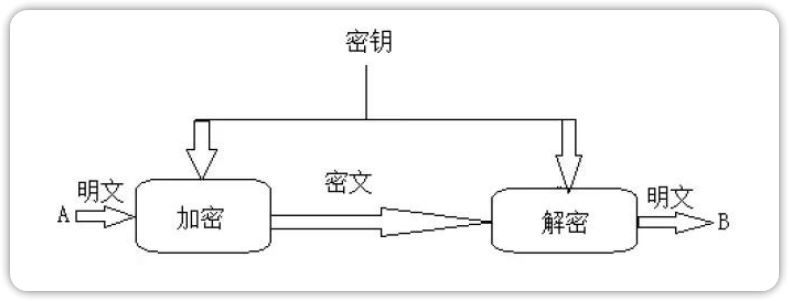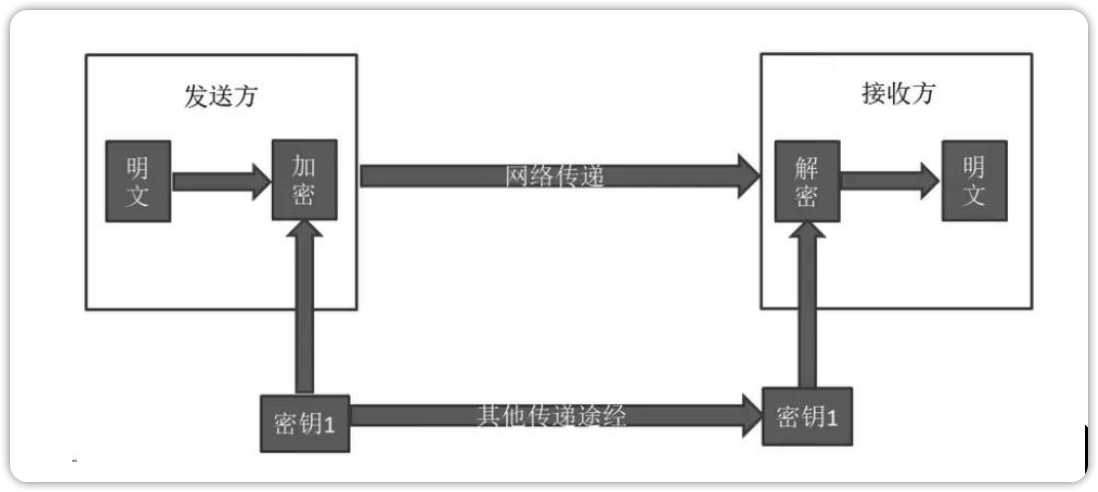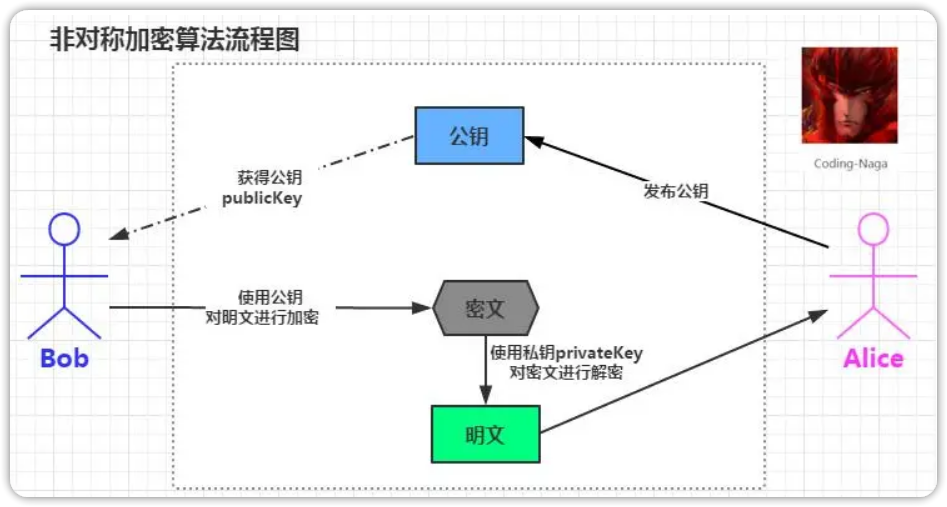转载自吾爱破/解精华帖正已手下的文章
一、课程目标
1.密码学基础
2.常见编码与算法
3.非标准加密对抗 二、工具
1.教程Demo(更新)
2.MT管理器/NP管理器
3.算法助手
4.雷电模拟器
5.Android Studio
6.jadx-gui 三、课程内容
1.为什么要学这个?- CTF
- 爬虫:算法还原、协议分析
- 网络安全:渗透测试、安全防护

2.密码学基础1.什么是密码学?密码学(cryptography)是一种将信息表述为不可读的方式,并使用一种秘密的方法将信息恢复出来的科学。密码学提供的最基本的服务是数据机密性服务,就是使通信双方可以互相发送消息,并且避免他人窃取消息的内容。加密算法是密码学的核心。 - 明文:原始消息
- 密文:加密后的消息
- 加密:从明文到密文的变换过程
- 解密:从密文到明文的变换过程
- 密钥:相用来完成加解密等过程的秘密信息

3.常见编码1.Base64编码CyberChef
定义:
Base64是一种用64个字符表示任意二进制数据的方法,是一种编码,并非加密字符编码,由 A-Z a-z 0-9 + / 和补充字符 “=” 组成,Base64编码后的字符数是4的倍数(不足会补"=") 明文: 复制代码 隐藏代码
吾爱破/解论坛密文: 复制代码 隐藏代码
5ZC+54ix56C06Kej6K665Z2b逻辑实现: 复制代码 隐藏代码
import java.util.Base64;public class Base64Example { public static void main(String[] args) { String text = "吾爱破/解论坛"; // 编码 String encodedString = Base64.getEncoder().encodeToString(text.getBytes()); System.out.println("Encoded string: " + encodedString); // 解码 byte[] decodedBytes = Base64.getDecoder().decode(encodedString); String decodedString = new String(decodedBytes); System.out.println("Decoded string: " + decodedString); }}自实现base64: 复制代码 隐藏代码
public class Base64Example { //base64码表 private static final String base64Chars = "ABCDEFGHIJKLMNOPQRSTUVWXYZabcdefghijklmnopqrstuvwxyz0123456789+/"; public static void main(String[] args) { String originalInput = "吾爱破/解论坛"; // 编码 String encodedString = encodeBase64(originalInput.getBytes()); System.out.println("Encoded string: " + encodedString); // 解码 byte[] decodedBytes = decodeBase64(encodedString); String decodedString = new String(decodedBytes); System.out.println("Decoded string: " + decodedString); } private static String encodeBase64(byte[] inputBytes) { StringBuilder sb = new StringBuilder(); int paddingCount = (3 - inputBytes.length % 3) % 3; for (int i = 0; i < inputBytes.length; i += 3) { int b = ((inputBytes & 0xFF) << 16) | ((i + 1 < inputBytes.length ? inputBytes[i + 1] & 0xFF : 0) << 8) | (i + 2 < inputBytes.length ? inputBytes[i + 2] & 0xFF : 0); sb.append(base64Chars.charAt((b >> 18) & 0x3F)).append(base64Chars.charAt((b >> 12) & 0x3F)).append(base64Chars.charAt((b >> 6) & 0x3F)).append(base64Chars.charAt(b & 0x3F)); } for (int i = 0; i < paddingCount; i++) { sb.setCharAt(sb.length() - i - 1, '='); } return sb.toString(); } private static byte[] decodeBase64(String inputString) { ByteArrayOutputStream bos = new ByteArrayOutputStream(); int paddingCount = 0; for (int i = 0; i < inputString.length(); i += 4) { int b = (base64Chars.indexOf(inputString.charAt(i)) << 18) | (base64Chars.indexOf(inputString.charAt(i + 1)) << 12) | (i + 2 < inputString.length() && inputString.charAt(i + 2) != '=' ? base64Chars.indexOf(inputString.charAt(i + 2)) << 6 : 0) | (i + 3 < inputString.length() && inputString.charAt(i + 3) != '=' ? base64Chars.indexOf(inputString.charAt(i + 3)) : 0); bos.write((b >> 16) & 0xFF); bos.write((b >> 8) & 0xFF); bos.write(b & 0xFF); if (inputString.charAt(i + 2) == '=') { paddingCount++; } if (inputString.charAt(i + 3) == '=') { paddingCount++; } } byte[] result = bos.toByteArray(); if (paddingCount > 0) { byte[] trimmedResult = new byte[result.length - paddingCount]; System.arraycopy(result, 0, trimmedResult, 0, trimmedResult.length); return trimmedResult; } else { return result; } }}2.Hex编码定义:
hex编码,又称十六进制编码(也称base16),一般用于方便人们查看二进制文件内容,它将字节数据中的每4个bit使用数字(0-9)、字母(A-F)共16个字符等效表示,由于一个字节有8个bit,所以一个字节会被编码为2个hex字符
PS:在 ASCII 编码中,只有0到127之间的数字是表示英文字母、数字和符号的,超出这个范围的字符需要使用其他编码方式,例如汉字就需要使用 UTF-8 或 UTF-16 明文: 复制代码 隐藏代码
吾爱破/解论坛密文: 复制代码 隐藏代码
E590BEE788B1E7A0B4E8A7A3E8AEBAE59D9B逻辑实现:
%02X 是一个格式化字符串,其中 % 是转义符,02 是最小宽度,表示输出的字符串至少包含两个字符,不足两个字符时用 0 填充,X 表示输出的字符集为大写的十六进制数。(算是一个特征) 复制代码 隐藏代码
// 将普通字符串转换为Hex字符串public static String stringToHex(String input) { StringBuilder output = new StringBuilder(); byte[] bytes = input.getBytes(StandardCharsets.UTF_8); for (byte b : bytes) { output.append(String.format("%02X", b)); } return output.toString(); } // 将Hex字符串转换为普通字符串 public static String hexToString(String input) { byte[] bytes = new byte[input.length() / 2]; for (int i = 0; i < input.length(); i += 2) { bytes[i / 2] = (byte) Integer.parseInt(input.substring(i, i + 2), 16); } return new String(bytes, StandardCharsets.UTF_8); }3.Unicode编码定义:
Unicode(统一码、万国码、单一码)是一种在计算机上使用的字符编码。 明文: 复制代码 隐藏代码
吾爱破/解论坛密文: 复制代码 隐藏代码
\u543E\u7231\u7834\u89E3\u8BBA\u575B逻辑实现: 复制代码 隐藏代码
// 将字符串转换为Unicode格式public static String stringToUnicode(String input) { StringBuilder output = new StringBuilder(); for (int i = 0; i < input.length(); i++) { output.append(String.format("\\u%04X", (int) input.charAt(i))); } return output.toString(); }// 将Unicode格式的字符串转换为原始字符串 public static String unicodeToString(String input) { StringBuilder output = new StringBuilder(); for (int i = 0; i < input.length(); i += 6) { String str = input.substring(i + 2, i + 6); output.append((char) Integer.parseInt(str, 16)); } return output.toString(); }4.Byte数组PS:常用于字符串加密
明文: 复制代码 隐藏代码
吾爱破/解论坛密文: 复制代码 隐藏代码
byte[] byteArray = new byte[]{-27,-112,-66,-25,-120,-79,-25,-96,-76,-24,-89,-93,-24,-82,-70,-27,-99,-101}; 复制代码 隐藏代码
public static void main(String[] args) { //stringtobyte数组 String originalInput = "吾爱破/解论坛"; byte[] bytes = originalInput.getBytes(); System.out.println(Arrays.toString(bytes)); //byte数组tostring byte[] byteArray = new byte[]{-27,-112,-66,-25,-120,-79,-25,-96,-76,-24,-89,-93,-24,-82,-70,-27,-99,-101}; String str = new String(byteArray); System.out.println(str); }4.加密算法1.消息摘要算法&单向散列函数&哈希算法定义:
单向散列函数算法也称Hash(哈希)算法(消息摘要算法),是一种将任意长度的消息压缩到某一固定长度(消息摘要)的函数(该过程不可逆)。 Hash函数可用于数字签名、 消息的完整性检测、消息起源的认证检测等。
常见的算法:MD5、HMAC、SHA-X(SHA-1,SHA-2) MD5摘要特性: - 压缩性:无论数据长度是多少,计算出来的MD5值长度相同(16位、32位)
- 抗修改性:即便修改一个字节,计算出来的MD5值也会巨大差异
- 抗碰撞性:知道数据和MD5值,很小概率找到相同MD5值相同的原数据
- 易计算性:由原数据容易计算出MD5值(逆推)
明文: 复制代码 隐藏代码
吾爱破/解论坛密文: 复制代码 隐藏代码
0bc50e2bf301b3f7c4309a9f4c9b19b2逻辑实现: 复制代码 隐藏代码
public static void main(String[] args) throws Exception { MessageDigest md = MessageDigest.getInstance("MD5"); md.update("吾爱破/解论坛".getBytes()); byte[] res = md.digest(); System.out.println(byteToHexString(res)); } public static String byteToHexString(byte[] by) { StringBuilder SB = new StringBuilder(); for (int k : by) { int j = k; if (k < 0) { j = k + 256; } if (j < 16) { SB.append("0"); } SB.append(Integer.toHexString(j)); } return SB.toString(); }2.对称加密算法定义:
加密和解密使用相同密钥的密码算法叫对称加解密算法,简称对称算法。对称算法速度快,通常在需要加密大量数据时使用。所谓对称,就是采用这种密码方法的双方使用同样的密钥进行加密和解密。

对称加密算法可以分为以下几种类型: - DES(数据加密标准):DES是一种对称加密算法,使用56位密钥,将数据分成64位块,然后进行加密。由于DES的密钥长度比较短,易受到暴力破/解攻击。
- 3DES(三重DES):3DES是基于DES算法的改进版本,使用三个56位的密钥,对数据进行三次加密,从而增加了加密强度。3DES比DES更加安全,但是加密速度较慢。
- AES(高级加密标准):AES是一种高级的对称加密算法,使用128、192或256位密钥,可以对不同长度的数据块进行加密。AES比DES和3DES更加安全,且加密速度更快。
- RC4:RC4是一种流加密算法,使用相同的密钥对数据进行加密和解密。RC4的密钥长度可以是40位、64位、128位等不同长度。RC4在实际应用中已经被证明存在漏洞,不再被推荐使用。
(1)AES加解密明文: 复制代码 隐藏代码
吾爱破/解论坛密文: 复制代码 隐藏代码
VPPMeI+jgyAtCYeM+VvamDapwXp+n4Q/oUHULimyLA4=逻辑实现: 复制代码 隐藏代码
import javax.crypto.Cipher; import javax.crypto.spec.SecretKeySpec; import java.util.Base64;public class Aes { private static final String ALGORITHM = "AES"; private static final String TRANSFORMATION = "AES/ECB/PKCS5Padding"; //加密模式 private static final String SECRET_KEY = "1234567wuaipojie"; //密钥 public static void main(String[] args) throws Exception { String originalMessage = "吾爱破/解论坛"; // Encrypt the message byte[] encryptedMessage = encrypt(originalMessage); System.out.println("加密结果: " + Base64.getEncoder().encodeToString(encryptedMessage)); // Decrypt the message String decryptedMessage = decrypt(encryptedMessage); System.out.println("解密结果: " + decryptedMessage); } private static byte[] encrypt(String message) throws Exception { SecretKeySpec key = new SecretKeySpec(SECRET_KEY.getBytes(), ALGORITHM); Cipher cipher = Cipher.getInstance(TRANSFORMATION); cipher.init(Cipher.ENCRYPT_MODE, key); return cipher.doFinal(message.getBytes()); } private static String decrypt(byte[] encryptedMessage) throws Exception { SecretKeySpec key = new SecretKeySpec(SECRET_KEY.getBytes(), ALGORITHM); Cipher cipher = Cipher.getInstance(TRANSFORMATION); cipher.init(Cipher.DECRYPT_MODE, key); return new String(cipher.doFinal(encryptedMessage)); } }(2)DES加解密明文: 复制代码 隐藏代码
吾爱破/解论坛密文: 复制代码 隐藏代码
QJBizO9/gNXe+fmKsWwHrkXExXultVO2逻辑实现: 复制代码 隐藏代码
import javax.crypto.Cipher; import javax.crypto.spec.SecretKeySpec; import java.util.Base64;public class Des { private static final String ALGORITHM = "DES"; private static final String TRANSFORMATION = "DES/ECB/PKCS5Padding"; //加密模式 private static final String SECRET_KEY = "52pj2023"; //密钥 public static void main(String[] args) throws Exception { String originalMessage = "吾爱破/解论坛"; // Encrypt the message byte[] encryptedMessage = encrypt(originalMessage); System.out.println("加密结果: " + Base64.getEncoder().encodeToString(encryptedMessage)); // Decrypt the message String decryptedMessage = decrypt(encryptedMessage); System.out.println("解密结果: " + decryptedMessage); } private static byte[] encrypt(String message) throws Exception { SecretKeySpec key = new SecretKeySpec(SECRET_KEY.getBytes(), ALGORITHM); Cipher cipher = Cipher.getInstance(TRANSFORMATION); cipher.init(Cipher.ENCRYPT_MODE, key); return cipher.doFinal(message.getBytes()); } private static String decrypt(byte[] encryptedMessage) throws Exception { SecretKeySpec key = new SecretKeySpec(SECRET_KEY.getBytes(), ALGORITHM); Cipher cipher = Cipher.getInstance(TRANSFORMATION); cipher.init(Cipher.DECRYPT_MODE, key); return new String(cipher.doFinal(encryptedMessage)); } }3.非对称加密算法定义:
非对称加密,也称为公钥加密,使用两个不同的密钥进行加密和解密,这两个密钥是一对,一个被称为公钥,一个被称为私钥。公钥可以随意分发给任何需要通信的人,而私钥则只能由密钥持有者保留。在非对称加密中,公钥用于加密消息,而私钥用于解密消息,这使得非对称加密更加安全,因为即使公钥被泄露,也无法破/解密文。
常见的非对称加密:RSA RSA加解密定义:
RSA是最具代表性的公钥密码体制。由于算法完善(既可用于数据加密又可用于数字签名)、安全性良好、易于实现和理解,RSA已成为一种应用极广的公钥密码体制,也是目前世界上唯一被广泛使用的公钥密码。在广泛的应用中,它不仅实现技术日趋成熟而且安全性逐渐得到证明。由此人们越发对RSA偏爱有加,并提出了许多基于RSA的加强或变形公钥密码体制。根据不同的应用需要,人们基于RSA算法开发了大量的加密方案与产品。
 PS:RSA公钥加密的每次结果都不一样 明文: 复制代码 隐藏代码
吾爱破/解论坛密文: 复制代码 隐藏代码
bLZtNVaHFLeKnQDG79KzOuvPa1HwGvcKX5fJfWR09g0HsAzM7NX7pcOzDp46UL4vOP/n1/DKxYpxxA8CjfxDdR8mNb4I3eNDq7oRZzQmDYKK+98uMuDc0+3utMuhojSdTe3cC6bWy66xcyV9LgX0Cau0sIDzBk9c7by6VCwj7xs=逻辑实现: 复制代码 隐藏代码
public class RSA { public static final String KEY_ALGORITHM = "RSA"; private static final String PUBLIC_KEY = "RSAPublicKey"; private static final String PRIVATE_KEY = "RSAPrivateKey"; // 1024 bits 的 RSA 密钥对,最大加密明文大小 private static final int MAX_ENCRYPT_BLOCK = 117; // 1024 bits 的 RSA 密钥对,最大解密密文大小 private static final int MAX_DECRYPT_BLOCK = 128; // 生成密钥对 public static Map<String, Object> initKey(int keysize) throws Exception { KeyPairGenerator keyPairGen = KeyPairGenerator.getInstance(KEY_ALGORITHM); // 设置密钥对的 bit 数,越大越安全 keyPairGen.initialize(keysize); KeyPair keyPair = keyPairGen.generateKeyPair(); // 获取公钥 RSAPublicKey publicKey = (RSAPublicKey) keyPair.getPublic(); // 获取私钥 RSAPrivateKey privateKey = (RSAPrivateKey) keyPair.getPrivate(); Map<String, Object> keyMap = new HashMap<>(2); keyMap.put(PUBLIC_KEY, publicKey); keyMap.put(PRIVATE_KEY, privateKey); return keyMap; } // 获取公钥字符串 public static String getPublicKeyStr(Map<String, Object> keyMap) { // 获得 map 中的公钥对象,转为 key 对象 Key key = (Key) keyMap.get(PUBLIC_KEY); // 编码返回字符串 return encryptBASE64(key.getEncoded()); } // 获取私钥字符串 public static String getPrivateKeyStr(Map<String, Object> keyMap) { // 获得 map 中的私钥对象,转为 key 对象 Key key = (Key) keyMap.get(PRIVATE_KEY); // 编码返回字符串 return encryptBASE64(key.getEncoded()); } // 获取公钥 public static PublicKey getPublicKey(String publicKeyString) throws NoSuchAlgorithmException, InvalidKeySpecException { byte[] publicKeyByte = Base64.getDecoder().decode(publicKeyString); X509EncodedKeySpec keySpec = new X509EncodedKeySpec(publicKeyByte); KeyFactory keyFactory = KeyFactory.getInstance(KEY_ALGORITHM); return keyFactory.generatePublic(keySpec); } // 获取私钥 public static PrivateKey getPrivateKey(String privateKeyString) throws Exception { byte[] privateKeyByte = Base64.getDecoder().decode(privateKeyString); PKCS8EncodedKeySpec keySpec = new PKCS8EncodedKeySpec(privateKeyByte); KeyFactory keyFactory = KeyFactory.getInstance(KEY_ALGORITHM); return keyFactory.generatePrivate(keySpec); } /** * BASE64 编码返回加密字符串 * * home.php?mod=space&uid=952169 key 需要编码的字节数组 * home.php?mod=space&uid=155549 编码后的字符串 */ public static String encryptBASE64(byte[] key) { return new String(Base64.getEncoder().encode(key)); } /** * BASE64 解码,返回字节数组 * * home.php?mod=space&uid=952169 key 待解码的字符串 * home.php?mod=space&uid=155549 解码后的字节数组 */ public static byte[] decryptBASE64(String key) { return Base64.getDecoder().decode(key); } /** * 公钥加密 * * @param text 待加密的明文字符串 * @param publicKeyStr 公钥 * @return 加密后的密文 */ public static String encrypt1(String text, String publicKeyStr) { try { System.out.println("明文字符串为:"+text); Cipher cipher = Cipher.getInstance(KEY_ALGORITHM); cipher.init(Cipher.ENCRYPT_MODE, getPublicKey(publicKeyStr)); byte[] tempBytes = cipher.doFinal(text.getBytes("UTF-8")); return Base64.getEncoder().encodeToString(tempBytes); } catch (Exception e) { throw new RuntimeException("加密字符串[" + text + "]时遇到异常", e); } } /** * 私钥解密 * * @param secretText 待解密的密文字符串 * @param privateKeyStr 私钥 * @return 解密后的明文 */ public static String decrypt1(String secretText, String privateKeyStr) { try { // 生成私钥 Cipher cipher = Cipher.getInstance(KEY_ALGORITHM); cipher.init(Cipher.DECRYPT_MODE, getPrivateKey(privateKeyStr)); // 密文解码 byte[] secretTextDecoded = Base64.getDecoder().decode(secretText.getBytes("UTF-8")); byte[] tempBytes = cipher.doFinal(secretTextDecoded); return new String(tempBytes); } catch (Exception e) { throw new RuntimeException("解密字符串[" + secretText + "]时遇到异常", e); } } public static void main(String[] args) throws Exception { Map<String, Object> keyMap; String cipherText; // 原始明文 String content = "吾爱破/解论坛"; // 生成密钥对 keyMap = initKey(1024); String publicKey = getPublicKeyStr(keyMap); System.out.println("公钥:"+publicKey); String privateKey = getPrivateKeyStr(keyMap); System.out.println("私钥:"+privateKey); // 加密 cipherText = encrypt1(content, publicKey); System.out.println("加密后的密文:"+cipherText); // 解密 String plainText = decrypt1(cipherText, privateKey); System.out.println("解密后明文:"+plainText); } }总的来说,非对称加密比对称加密更加安全,但同时也更加计算密集和复杂,因此在实际应用中需要根据具体情况来选择合适的加密方式。常见的做法是使用对称加密算法加密数据,然后使用非对称加密算法加密对称加密算法使用的密钥,这样既保证了数据的安全性,又避免了非对称加密算法的资源消耗。 4.非标准加密算法遇到不是常规的加密怎么办?
方法一:主动调用
方法二:扣算法
方法三:问问神奇的ChatGPT 四、课后小作业
修改教程demo中的值 五、答疑
六、视/频及课件地址
百度云
阿里云
哔哩哔哩
PS:解压密码都是52pj,阿里云由于不能分享压缩包,所以下载exe文件,双击自解压 |
